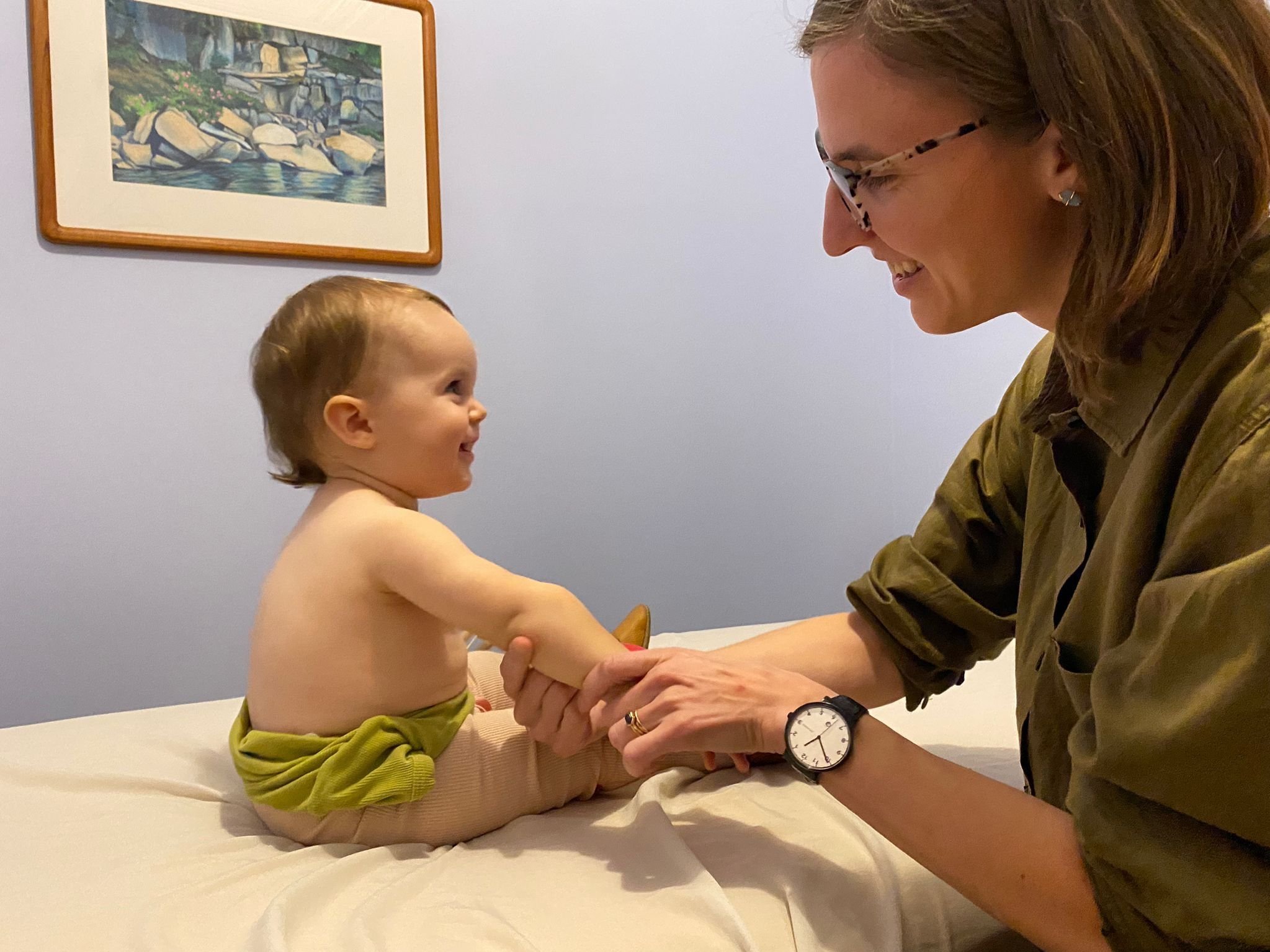Pediatric Acupuncture and Bodywork: FAQ
By Kenna Bouvet
What does a treatment for kids look like?
Pediatric appointments look and run a bit differently than a typical adult appointment. Treatments are shorter and very interactive (especially for infants and toddlers). We suggest the child bring a toy or stuffed animal that they love. This makes the appointment fun and playful and creates a space where children feel comfortable and relaxed. Before the visit a parent fills out an intake form (teens can fill out their own), and if I have any questions or want to know more before the appointment, I correspond through email or phone with the parent. There is a short intake in person while the child gets comfortable playing or for infants while they sleep or feed. For older children and teens this conversation includes them, and I love to hear in their own words how things are going. Then I explain what modalities we will use, begin some diagnostic techniques, and get started with the treatment. Often, we keep playing and chatting throughout the treatment. For infants the treatment is often done in a parent’s arms. Most importantly, in all pediatric appointments, the child drives the treatment, so it always looks different depending on the child and the day.
What ages do you treat?
Infants through 18 years. After that, 18+ can book a regular adult appointment.
Does my child have to be able to sit still for the treatment?
Absolutely not! Children can move and squirm and play during treatment. At times, children may find themselves getting into a relaxed state as well. As the child grows and becomes more comfortable lying still, the treatments will naturally shift to meet this ability.
What are the most common things acupuncture can help with in children?
Pediatric acupuncture can address a large variety of issues, but here is a list of the most common reasons a child may come to see me:
For infants: tension and tightness from birth, colic, gas, constant spitting up, skin issues, failure to thrive.
For toddlers and school-aged children: respiratory issues (asthma, common cold, sore throat), digestive issues (stomach pain, constipation, diarrhea), allergies, ear infections, teething discomfort, sleep issues, ADHD, autism, tics, anxiety, immune system strengthening, sensory processing issues.
For teenagers: sports/dance injuries and pain, menstrual issues, headaches and migraines, sleep issues, anxiety, depression, stress, concentration in school, autism, eating disorders, tics, immune system strengthening.
What modalities are used in a pediatric treatment?
Pediatric acupuncture encompasses many modalities. The tools used in a treatment depend on what the health goals are, the age of the child, the nature of the child, and what the child and parent feel comfortable with. Here are some modalities that may be used:
Shonishin: This is a Japanese non-needling method which uses various gold and silver tools to tap and stroke areas on the body. This modality is mostly used on infants to children 7 or 8 years of age but can be effective on adults too.
Pediatric Tui Na (Chinese medical massage): This is a wonderful and effective system of massage which I often teach to parents so they can do it at home.
Acupressure: Acupuncture points are stimulated with the practitioner’s hands. These techniques are often taught to parents or the child to do at home.
Seeds and Magnets: These are tiny balls or magnets in the middle of a round hypoallergenic sticker that can be placed directly on the skin to activate certain treatment points after the appointment.
Acupuncture “Taps”: Children’s acupuncture needles can be painless and are generally accepted happily by children. I use tiny colorful needles that are thinner than a strand of hair. For children under 4 years of age there is no retention time (instead, a momentary insertion and removal). For school aged children retention is based on what the child can handle but nothing more than 3-4 minutes. Only a small number of needles, if any, are used in a treatment.
Moxibustion: “Moxa” is the dried herb, mugwort, and is invaluable for the treatment of children for things like colic, anxiety, stomach pain, fatigue and more. Moxa is administered in different ways, most commonly as a cigar-like stick held above acupuncture points on the body.
Pediatric Cupping: Another ancient modality used for acute conditions like a cold or coughs, pain from a sports injury, or tension from birth or digestive troubles. We use small silicone cups placed on the skin which gently lift and allow for space and circulation within the fascial layer. This is often a favorite modality!
Other Modalities: Diet discussions and lifestyle counseling.
Pediatric acupuncture treats the whole child, rather than just the illness. Many parents first bring their children in for an acute complaint, but often continue appointments because they see the benefit in the treatments not only helping symptoms but in boosting the overall resilience and health of their children. Treating infants to teens is a passion of mine. Nourishing the young creates a ripple effect for the whole life of the child as well as for their family and community.
For more questions feel free to email kenna@earthskylic.com


